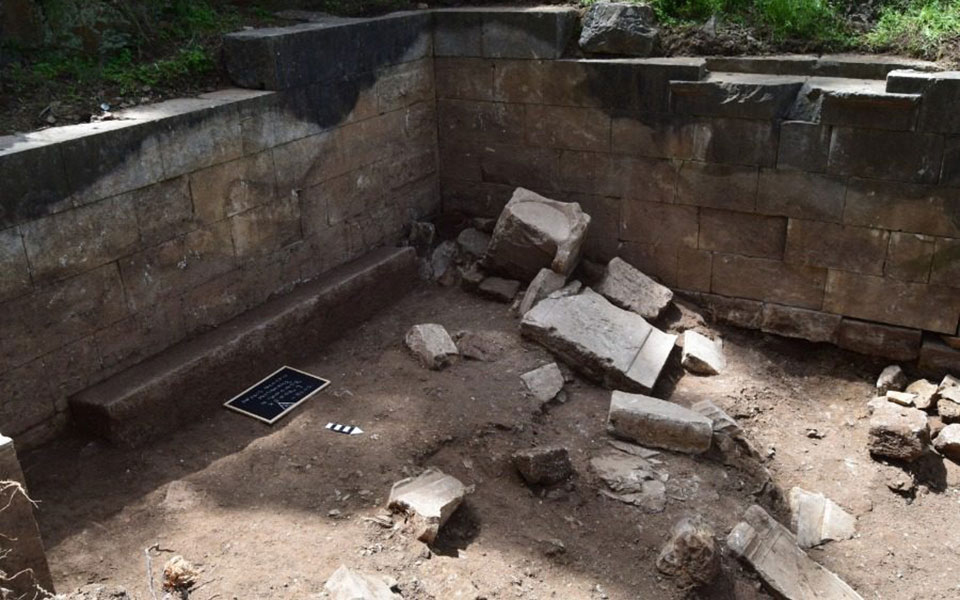English-Subtitled Season Debuts at Athens’ Pallas Theater
This season, the iconic Athens venue…

© stonisi.gr
A temple of Nemesis has been found under the ancient theater of Mytilene, on the northeast Aegean island of Lesvos, according to a report on the news website Sto Nisi.
The remains of the temple were found in the south entry passage (parodos), under a series of large limestone blocks.
Research shows that the theatre had two construction phases, in the Hellenistic era (3rd century BC) and the Roman one (1st century AD). The temple itself dates to the 1st century AD and was identified by a stone altar for offerings featuring a series of dedicatory inscriptions by priests and prominent personalities.
According to leading excavator and head of the Lesvos Ephorate Pavlos Triantafyllidis, the temple’s location in southern parodos was not arbitrary, as an arena for gladiator duels was built in the orchestra during Roman times.
“As their contests had to conclude with the serving of justice and the awarding of victory to the best gladiator, the existence of a temple to Nemesis was obligatory,” Triantafyllidis said.
Nemesis was an ancient Greek goddess of divine retribution and revenge, especially for hubris committed against the gods.
The excavations in the area continue with the contribution of the University of Bari’s school of civil engineering, in Italy. The dual phases of the theater’s construction were established by its professors Georgio Rocco and Monic Livadiotti.
Diazoma, an organisation promoting ancient Greek theaters, quotes Plutarch who said the theater was so important in antiquity that Pompey copied its plans to build one like it in Rome in 55 BC which became a model for subsequent buildings.
In modern times, very little is preserved of the earlier phases, as the remains have suffered from soil erosion and from removal for use in the Mytilene castle during the Middle Ages.
[ANA-MPA]
This season, the iconic Athens venue…
Twenty-nine rare antiquities spanning 5,000 years…